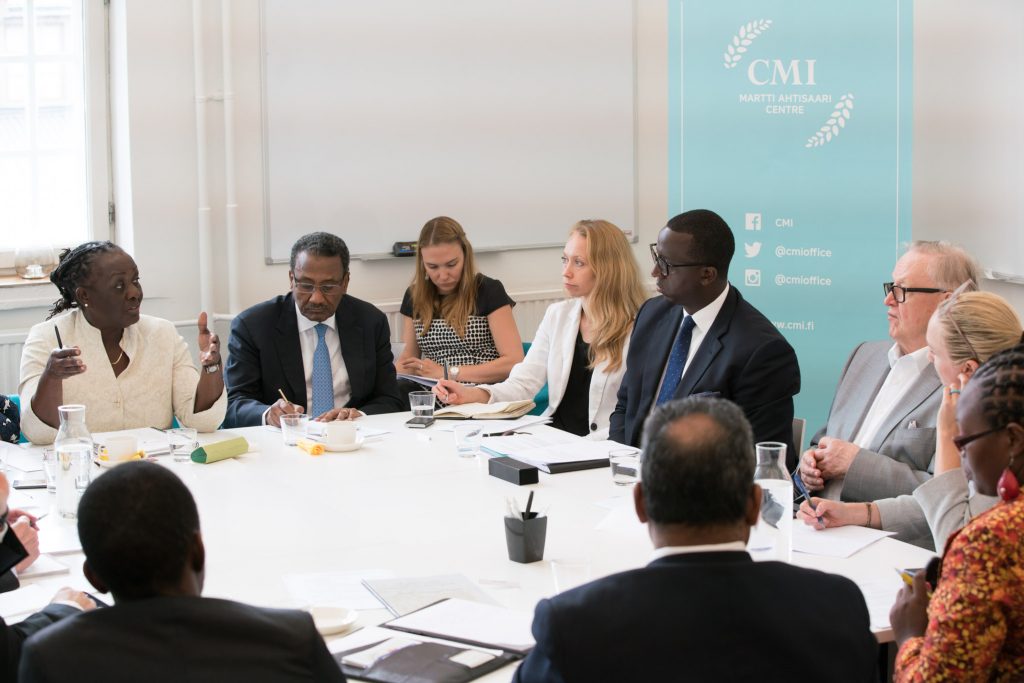How does the future of peacebuilding look like? Here are the top trends

The members of the Joint Steering Committee of the African Union Mediation Support Capacity Project gathered at CMI’s headquarters in Helsinki in July.
1. Attitudes towards security have hardened
War is not out of business. The growth of power politics, polarization of debates and harsh rhetoric weaken the norms and institutions that uphold peace, security, international law and human rights in the world. This is highlighted, for example, by the inaction of the UN Security Council in the face of the world’s conflicts. Muscular diplomacy is on the rise, as states are increasingly pushing for their own interests – often at the expense of others. Hard security measures, such as strengthening of armed forces, are often the primary response to insecurity while mediation and conflict resolution as more effective solutions are undermined.
2. Space for peace mediation is shrinking
Whether it is due to suppression in authoritarian states, or cuts in funding, the peacemaking abilities of civil society actors in many countries are under pressure. This trend of shrinking civil society space is being increasingly felt not only in conflict-affected countries or in authoritarian states but also in Western Europe and North America. A side effect of muscular diplomacy is that countries want to play a more frontline role in mediation and not simply support others to do the work.
3. Need for greater flexibility and complementarity
Conflict resolution is delicate work that relies on flexibility to meet shifting conditions, and responsiveness to capitalize on opportunities for peace. This flexibility and responsiveness of specialist mediation and conflict resolution NGOs to engage on the ground is under threat due to cuts in strategic funding and a move to project funding by governments.
Greater flexibility is needed in terms of how peace mediation is perceived. Peace and development go hand in hand, but development work is different from peace mediation. Peace processes are not linear – they can advance, stall or even reverse – and involve sensitive issues and relationships. Rigid thinking on how to best pursue peace is bound to fail.
Building peace requires working together. This also means new forms of working together for multilateral, regional and non-governmental actors. As conflicts blur the lines between internal and external, so too do the boundaries between official and unofficial actors disappear. New means of communication, and networked societies also challenge concepts of confidentiality and how to communicate about peace processes.
4. Peace is recognized as the basis of well-being
Peace is more than the absence of conflict. Peace is about just and inclusive societies, with effective and accountable institutions. Development and peace go hand in hand, and sustainable development means sustaining peace in countries that are at risk or are devastated by conflict and violence. Thus mediation and conflict resolution is also at the forefront of sustaining peace for human well-being.
Sustainable ways of preventing and resolving conflicts are also needed in western countries due to refugee flows, terrorist attacks and the rise of extreme political rhetoric. This has resulted in a number of international conflict resolution organisations putting their expertise to use in their home countries.
CMI would like to thank its peer organisations for contributing to this trend analysis. The analysis has been part of CMI’s strategy and programme development in 2017.